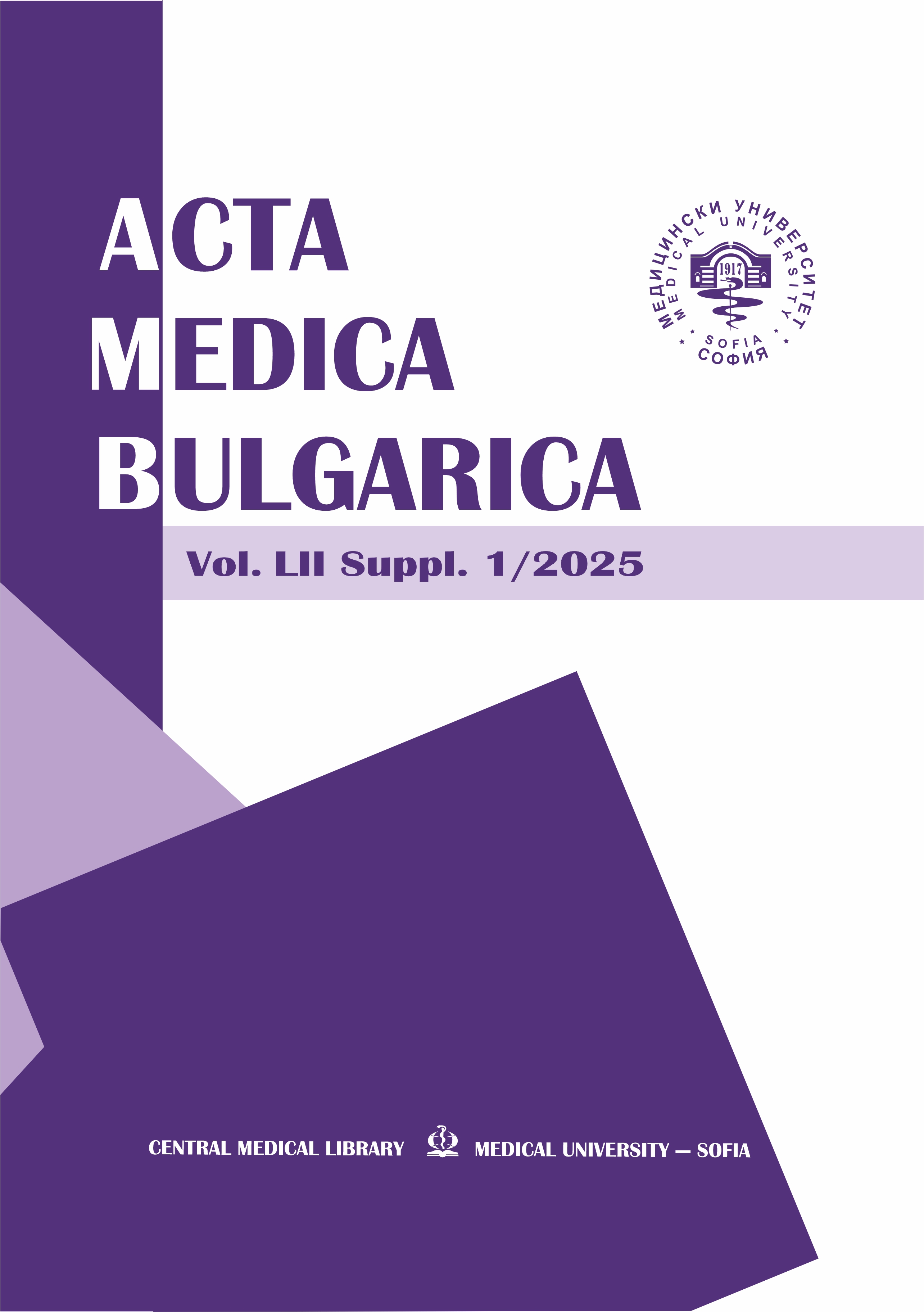VACTERL-association: case report
DOI:
https://doi.org/10.2478/AMB-2025-0018Keywords:
VACTERL association, delivery, ultrasound, prenatal diagnosisAbstract
Background: VACTERL is a rare association of congenital abnormalities with incidence 1/10 000 to 1/40 000 live births. VACTERL association is typically defined by the presence of at least three of the following congenital malformations: vertebral defects, anal atresia, cardiac defects, tracheo-esophageal fistula, renal anomalies, and limb abnormalities. We are presenting a case report of natural delivery of live born full-term fetus with VACTERL association. Our aim is to emphasize the role of prenatal diagnostics of fetal malformations in order to avoid deliveries of polymalformative fetuses with poor prognosis and mental trauma of the parents. Methods: A 18-year-old primiparous woman in 38th gestational week was admitted in the department because of spontaneous rupture of amniotic membranes and irregular uterine activity. History of the patient indicated insufficient monitoring during the pregnancy. Ultrasound examination showed hypotrophic and polymalformative fetus. The amount of amniotic fluid was increased despite of definite rupture of amniotic sac. Presence of only two umbilical vessels was established. Results: Regardless of the manifestation of fetal distress during the delivery, medical council decided that cesarean section was unjustified because of unsecure prognosis of the newborn and the labor should be completed vaginally. Hypotrophic male with multiple congenital malformations was born that required surgical intervention in the postpartum period. Lethal outcome occurred due to multiple organ failure. Conclusions: The prognosis of VACTERL is determined by the number, severity, and nature of abnormalities present. The ultrasound can identify not only the defects but also specify the prognosis of the fetus.
References
Pariza PC, Stavarache I, Dumitru VA, et al. VACTERL association in a fetus with multiple congenital malformations – Case report. J Med Life. 2021 Nov-Dec;14(6):862-867. doi: 10.25122/jml-2021-0346.
Rittler M, Paz JE, Castilla EE. VACTERL association, epidemiologic definition and delineation. Am J Med Genet. 1996; 63:529-536.
Carli D, Garagnani L, Lando M et al. VACTERL (vertebral defects, anal atresia, tracheoesophageal fistula with esophageal atresia, cardiac defects, renal and limb anomalies) association: disease spectrum in 25 patients ascertained for their upper limb involvement. J Pediatr. 2014 Mar;164(3):458-62.e1-2. doi:10.1016/j.jpeds.2013.09.033.
Solomon BD. VACTERL/VATER Association. Orphanet J Rare Dis. 2011 Aug 16; 6:56. doi:10.1186/1750-1172-6-56.
Raam MS, Pineda-Alvarez DE, Hadley DW et al. Long-term outcomes of adults with features of VACTERL association. Eur J Med Genet. 2011 Jan-Feb;54(1):34-41. doi: 10.1016/j.ejmg.2010.09.007.
Van de Putte R, de Walle HEK, van Hooijdonk KJM, et al. Maternal risk associated with the VACTERL association: A case-control study. Birth Defects Res. 2020 Nov;112(18):1495-1504. doi: 10.1002/bdr2.1773.
Santos J, Nogueira R, Pinto R, et al. First Trimester Diagnosis of VACTERL Association. Clin Pract. 2013 Feb 5;3(1):e5. doi:0.4081/cp.2013.e5.
Jong E, Felix J, Deurloo J, et al. Non-VACTERL-type anomalies are frequent in patients with esophageal atresia/tracheoesophageal fistula and full or partial VACTERL association. Birth Defects Res 2008;82:92-7
La Placa S, Giuffrè M, Gangemi A et al. Esophageal atresia in newborns: a wide spectrum from the isolated forms to a full VACTERL phenotype? Ital J Pediatr. 2013 Jul 10;39:45. doi: 10.1186/1824-7288-39-45.
Tongsong T, Chanprapaph P, Khunamornpong S, Prenatal diagnosis of VACTERL-association – case report, J Med Assoc Thai 2001; 84: 143-148.
Downloads
Published
Issue
Section
License
Copyright (c) 2025 N. Stoyanova, N. Popovski (Author)

This work is licensed under a Creative Commons Attribution-NonCommercial-NoDerivatives 4.0 International License.
You are free to share, copy and redistribute the material in any medium or format under these terms.


 Journal Acta Medica Bulgarica
Journal Acta Medica Bulgarica 